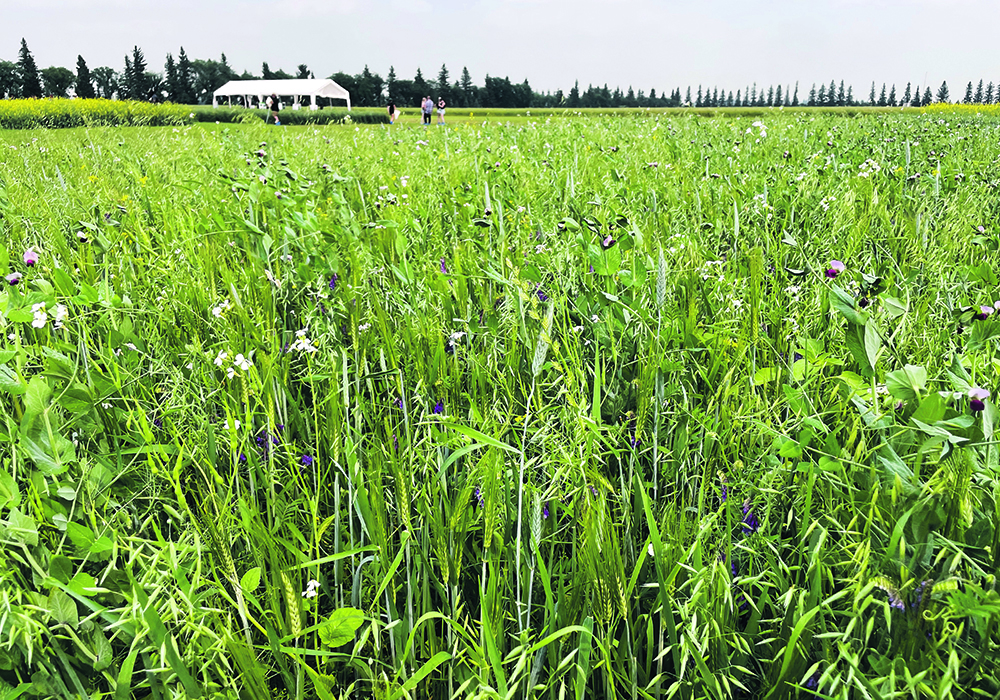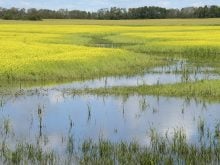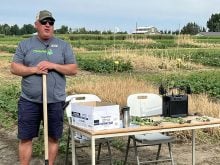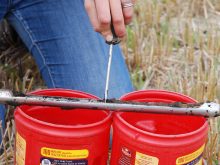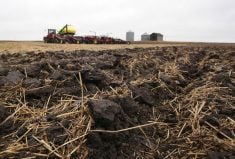Diverse mixes beneficial for forage production and soil health, but it depends on what producers want to do on their farms
Glacier FarmMedia – MELFORT, Sask. — For some, cover crops come from anything available to keep things green through the shoulder season. For others, they’re a carefully curated recipe to make specific improvements in a field.
The blend demonstrated in late July at the Melfort Crop Diagnostic School was closer to the second option.
It was a full season mix from southwestern Manitoba company Covers & Co. comprising 16 species that included forage oats, forage barley, forage peas, yellow peas and smaller percentages of purple top turnip and spring triticale. It was intended as forage for haying or grazing.
Read Also
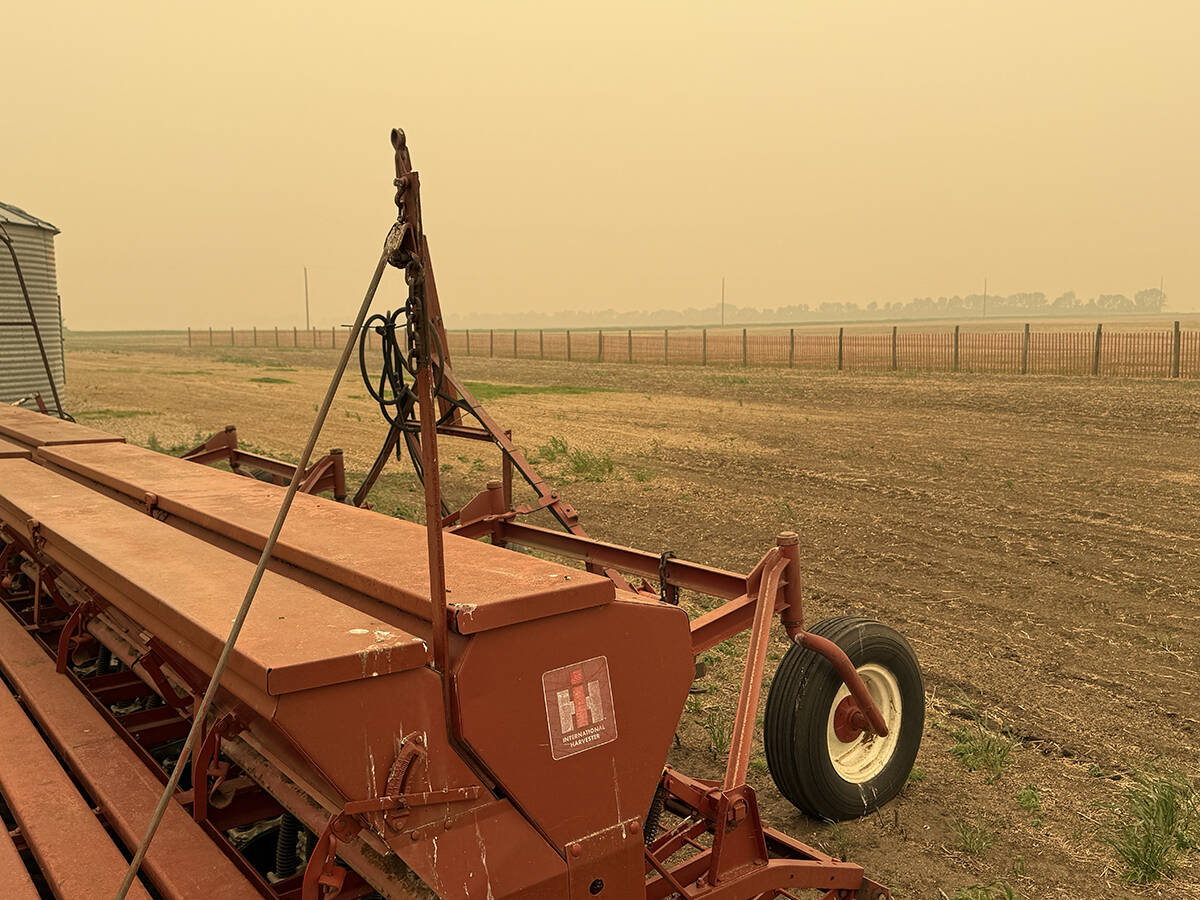
Wildfires have unexpected upside this year
One farmer feels smoke from nearby wildfires shrouded the July skies and protected his crop from the sun’s burning rays, resulting in more seeds per pod and more pods per plant.
“Diverse mixes like this are really great for forage production or soil health,” said Austin Baron, an agri-environmental specialist with Saskatchewan Agriculture.
“But it’s all dependent on what you want to do on your farm.”
Cover crops for both forage and grain systems are based on promised soil health benefits, crop nutrition and beneficial insect support.
Blends aren’t always straightforward. Speakers on the subject often stress that the design depends on the specific gains a producer seeks.
“I was always looking for how many species do I need to make this great. No one can ever give me a straight answer,” said Baron.
“Which is too bad. I like a solid line, like ‘this’ is how many species you need.”
The general advice is to pick from different families such as brassicas, cereals and legumes based on what is known to grow well in an area, but some options provide little benefit when included in a cover.
For example, Baron questions including flax and sunflowers. There are better feed options with better roots and, in the case of sunflowers, less problematic residue. However, she acknowledged that sunflowers are powerful pollinator attractants.
For crop production, she recommends a simple intercrop mixture of two or three species, such as oats and peas, to ensure easier cleaning. If the goal is soil health and forage stand production, a greater plant diversity is better.
“Lots of our brassica species, like turnips and radishes, have a really strong taproot or tuberous root, and they can get down into those deeper layers and open up that soil and really help with that water infiltration,” she said.
“So having different rooting systems in there really allows for different channels of water to penetrate your soil horizons.”
Biomass and soil organic matter gains are also possible compared to monoculture crops.
“We saw … a significant gain in the organic matter content at the five to 20 centimetre depth over only two years,” said Jeff Schoenau, a University of Saskatchewan soil scientist and strategic research program chair in soil nutrient management.
“By the time it dries down, you may not see a really impressive dry matter yield. But below ground, if you’re looking for improvement in the soil health, I think that’s where these kinds of polycrop systems, as a cover crop, are really going to come in, especially when they’re grazed or hayed and then swath grazed.”
Cover crops have also gained attention for their potential to include nitrogen-fixing crops, potentially lowering fertilizer requirements. Most nitrogen from a legume-heavy cover crop is released the following year from old root nodules, Schoenau said.
In Saskatchewan, cover crop trials have had the most success in Saskatoon, Melfort and Lanigan. Trials in Swift Current suggest that cover crops are less helpful in drier areas because they dry the soil profile.
When the cover is bound for livestock feed, there is the added requirement to ensure all species are safe and useful for feed. If grazing the crop, bloat and nitrate issues must be considered.
“There’s a lot of things out there that can kill cows if they’re not just right,” Baron said.
“We know our cereals can accumulate nitrates, but our brassicas can accumulate sulfates.
“There is supposed to be sorghum Sudan grass in this blend, which accumulates prussic acid,” she said about the plot at Melfort.
“You can do samples of your forage while still standing, or, if you cut and bail it, we recommend using your forage probe and sending away for anti-nutritional factors if you’re feeding it.”


